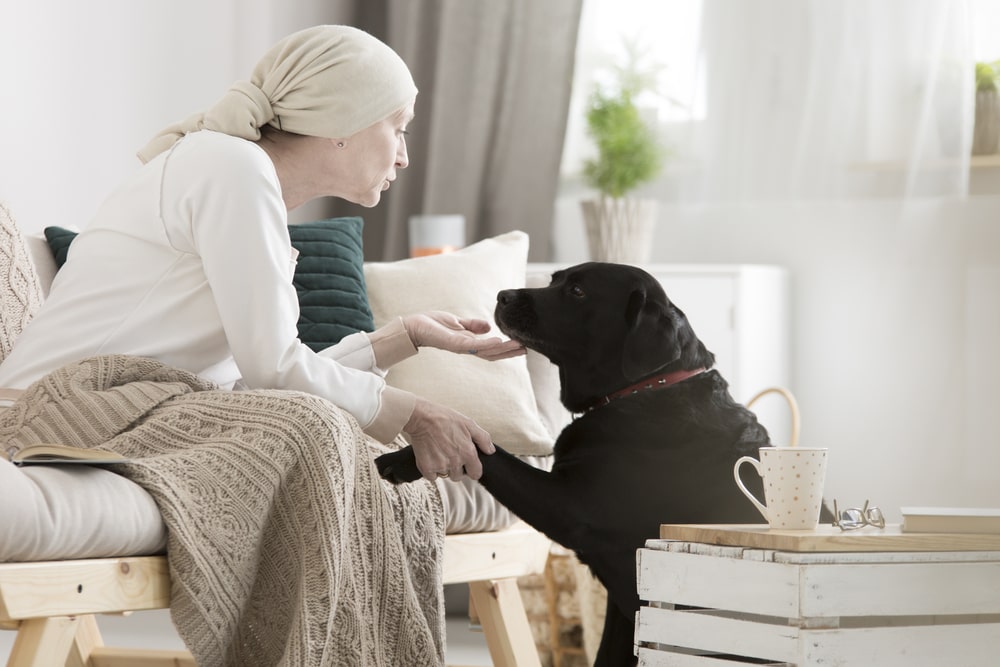Are you familiar with the term pet therapy?
We all know how amazing pets are. From providing great company to bringing a sincere smile to our faces, they’re tiny balls of fur meant to exist in our world just to make it more bearable. However, did you know that playing with dogs can be very therapeutic? To many, it may come as a surprise, yet this type of treatment has several positive effects on health, especially for seniors.
Elders can engage with animals as part of a pet therapy program, also known as animal-assisted therapy, to enhance their quality of life. Isn’t that amazing? These guided interactions between the dog and the senior can take place anywhere, from nursing homes to residential aged care facilities to the senior’s own house.
Are you curious about how pet therapy works? Keep reading the following lines:

1. Mental benefits
Pet therapy is incredibly beneficial for senior’s mental health and its effects are particularly noticeable for those who also suffer from dementia or any other kind of cognitive impairment. Owning a pet can also increase the level of mental stimulation. The capacity for memory stimulation can be strengthened with more socializing.
This occurs because, in general, dogs help reduce the bad behavior that is typically linked to dementia. Pet therapy is proven to be quite helpful in the mental aspect, as it helps lessen feelings of helplessness, rage, and irritation in persons with dementia.
We know that dogs can’t respond verbally, but that doesn’t mean we should stop talking to them. In their way, they understand their owner and care for them.
2. Increase communication
As we previously mentioned in the previous paragraph, talking to your pet has a ton of psychological benefits. Talking to dogs can be entertaining and very therapeutic, especially for seniors who are isolated or feel lonely.
Verbalization between humans and animals may then lead to more interaction between humans. According to various studies, people who decided to adopt a pet improved their social skills and made more friends over the years.
3. Increase mobility and physical exercise
Any interaction with animals, whether it involves walking a dog around the block, playing stick with a dog, doing a bit of jogging, giving food and brushing, or stroking and hugging, stimulates moving your body, which helps you sleep better at night and feel less exhausted throughout the day.
Furthermore, physical activity can have a positive impact on cardiovascular health by reducing cholesterol and blood pressure levels. This also results from having a pet or something to touch, which lowers tension and returns the heart rate to normal.
4. Emotional benefits
A huge percentage of American seniors are prone to depression as a result of isolation and empty-nest syndrome. It doesn’t matter the reason, but it’s good to know that pet therapy can help you overcome this issue.
You see, people are usually happier when they are surrounded by pets. Only they can offer this sense of devotion and trust, which is something that cannot be acquired by human connection. When things go rough, they first provide emotional stability. Anxiety levels drop as loneliness diminishes, which reduces the chance of developing depression.
With the risk of repeating ourselves, the benefits become much more evident for those suffering from dementia, as animals provide comfort when verbal expression is difficult for them.
Do you have a dog, and you’re looking for a nice leash that’s comfortable for both you and them? We got a suggestion that’s also super affordable on Amazon. With a thickness of 0.24 inches, which is 33.3% thicker than other leashes, the handle of this long leash is composed of a soft yet durable EVA.
It provides a very pleasant shock grip, guards against rope burn, and will allow you and your dog to go on many hassle-free walks. It costs just $8.32, but hurry up because the offer is limited!
5. Decreases negative behaviors
When the relationship between the pet and the human is right, the senior’s uncomfortable emotions—like rage, outbursts, and irritation—may diminish by the calming emotional influence of the pet.
There are various forms of pet therapy and below you will find some examples and their positive impact:
-
Animal-assisted therapy
For elderly patients in need of intensive care, animal-assisted therapy is a very structured and formal kind of pet therapy. To improve nonverbal communication and raise patients’ confidence, patients are partnered and set up with sensitive animals such as horses and dolphins.
-
Visitation therapy
Visitation therapy is the most often used type of pet therapy. In this type of treatment, patients are visited by handlers or owners, either at their residences or in a medical institution that permits such visits. Both patients and medical workers might feel more at ease when they see animals.
-
Animal-assisted activities
Compared to animal-assisted therapy, this style of treatment is typically significantly less formal. In contrast to the rigorous and rigorous framework of animal-assisted therapy, animal-assisted activities frequently incorporate social activities with animals for their companionship and comfort. This might entail going shopping, hiking, or taking walks.

“Am I eligible for pet therapy?”
This is a frequent question people ask whenever they read information about this type of therapy. The following factors determine your eligibility for animal-assisted therapy: your health, your insurance or other therapeutic assistance, and getting in touch with a program that is available.
Therapy dogs are not legally the same as assistance dogs, therefore requirements for animals vary depending on the facility or area. A few prerequisites might include a vaccination record, insurance, registration, or training certification.
While dogs are the most popular species used in animal therapy, other animals can also be utilized. Horses, birds, and rabbits are among the favorites, besides dogs. Since certain animal species complement the services offered, they are utilized more frequently.
Therapy animals, no matter what kind, should be well-trained, at ease with a wide range of people, and have a disposition suitable for the environments in which they are employed.
Before you start thinking about pet therapy for yourself or other family members, make sure you know all the details about it. Certain individuals are afraid of dogs, for example, so they may need to be replaced with other animals. Or maybe they’re allergic to dog hair.
Additionally, although pets used in pet therapy are supposed to be clean, vaccinated, and healthy, we’d still recommend that you wash your hands frequently and use antibacterial soap or wipes after interacting with animals to reduce the chance of transferring germs or infections.
Bottom line:
Pet therapy, which involved spending time with animals, was often thought to be a simple recreational activity. However, it may be a very useful tool for individuals of all ages, especially seniors, since it provides purpose and engagement.
By providing comfort, lowering stress levels, and enhancing general health and wellness, the company offers a potent means of overcoming loneliness and isolation. Seniors with dementia in particular might gain a great deal from treatment with a furry pet on the mental, emotional, and physical fronts.
Are you around and have you enjoyed reading about pet therapy benefits? I have another cool suggestion for you: Collagen Supplements: 7 Incredible Ways They Can Improve Your Life.



















